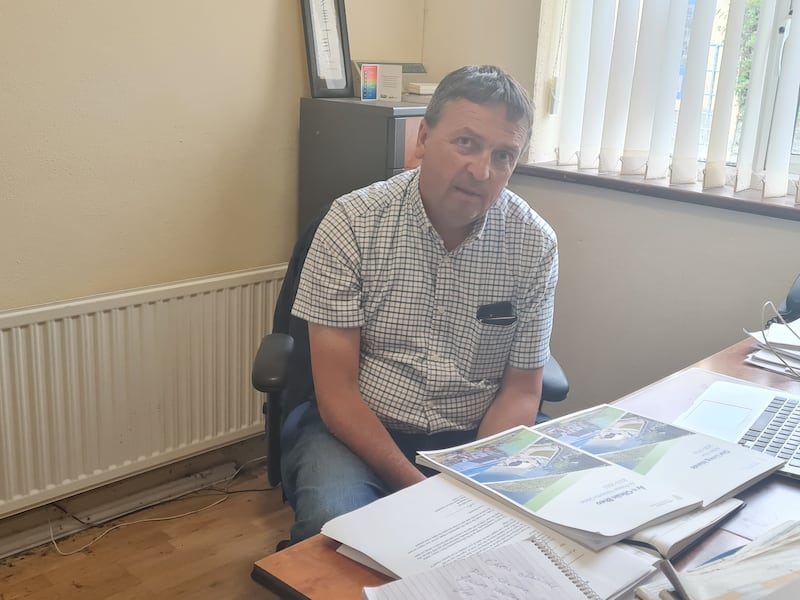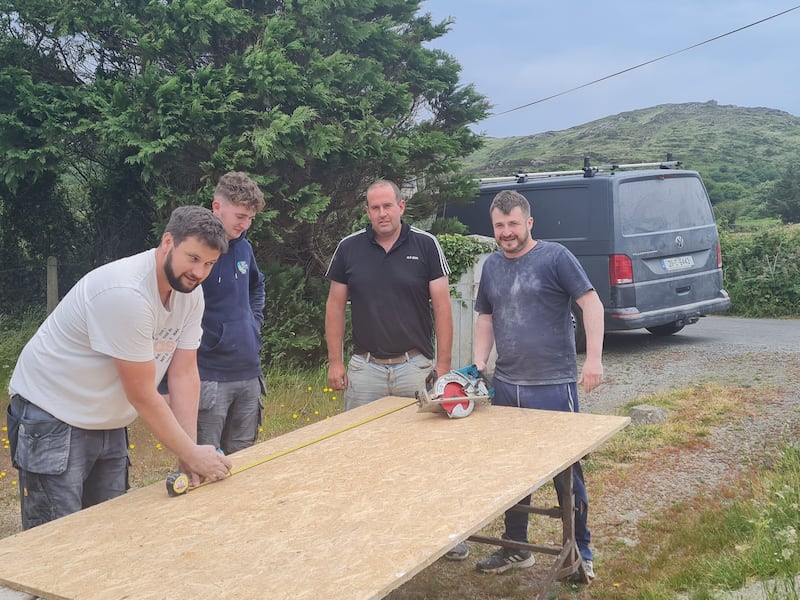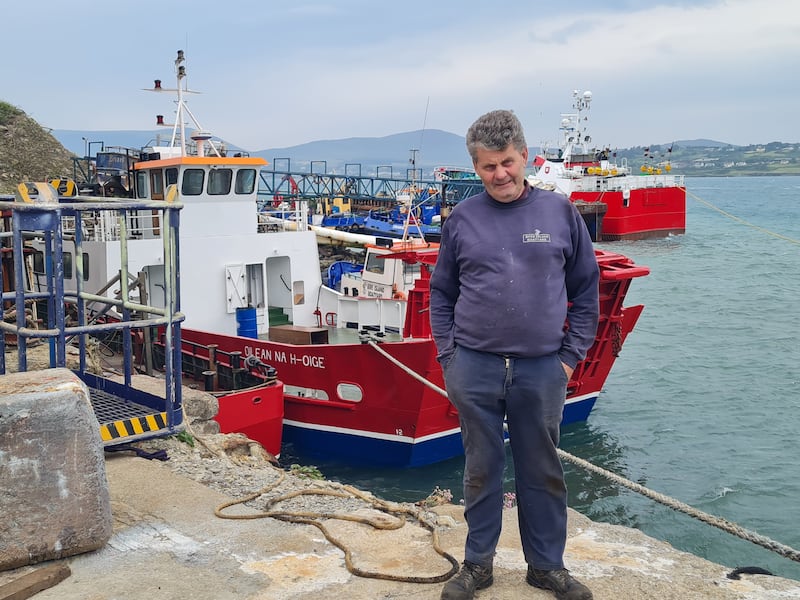It may have been launched on Arranmore off the west coast of Co Donegal – one of the country’s most northerly islands – but the Our Living Islands initiative looks set to receive a positive response all along the west coast.
At least, that is judging from the reception the Government’s new national policy for the country’s islands – the first in 27 years – received on one of the most southerly isles, Bere Island, off the coast of West Cork.
“It’s a step in the right direction,” said Bere Island Projects Group co-ordinator John Walsh, who has just returned from Arranmore, as he surveyed the Government policy for sustainable island living.
The policy includes a proposal to provide additional grants for those seeking to renovate a house on an island.
READ MORE
Minister for Rural and Community Development Heather Humphreys described the 10-year plan as a way “to support and empower our island communities and the people living there”.
Of particular significance to Bere and the other 26 inhabited islands off Donegal, Sligo, Mayo, Galway and Cork that are cut off daily from the mainland by tides is the proposal to provide extra funding under the Croí Cónaithe housing scheme for the renovation of vacant and derelict properties.
Under Croí Cónaithe, operated by the Department of Housing, people can get grants of €50,000 to renovate vacant homes and €70,000 to renovate derelict homes. There is added help for island dwellers: they can qualify for 20 per cent additional support: vacant house grants of €60,000 and derelict house grants of €84,000.
Sitting in his office in the community centre in Ballinakilla in the centre of Bere Island, Walsh, who is also chairperson of Comhdháil Oileáin na hÉireann, the Irish Islands Federation, is enthusiastic about the plan.
He sees the policy as offering hope to those seeking to make lives for themselves on Bere.
“It will definitely have an impact. There is a good demand for housing here on Bere Island. There are people wanting to move here but if you want to build in any rural area, you have to show you have family in the area or some connection with the place when you go to apply for planning permission,” he said.
“But if you are renovating a vacant or a derelict house, you don’t need that requirement for planning so it is going to help in turning around a vacant or a derelict property. We have a few people wanting to move back so it could help in doing up houses already on the landscape [rather] than building new ones.”

The other positive development in the scheme is that it “recognises that islands are different”, he says.
“It was estimated a few years back that it could be up to 30 per cent higher [costs] to build on an island because of extra transportation costs, and that could be gone higher with Covid, so the 20 per cent extra is very welcome.”
Located on the northern side of Bantry Bay, just off the Beara Peninsula, Bere Island is the largest of the seven inhabited islands in West Cork. It is about 10km long and 3km wide with a population, according to the 2016 census, of 167 people. This was down almost 23 per cent from 2011 when 216 lived on the island.
Walsh puts the current population at about 180 and while it fell from more than 2,100 before the Famine to less than 1,500 by 1851, numbers began to increase again at the start of the 20th century when the British military built a fort on the island. The population, swollen by the military presence, rose to more than 2,000.
Following the War of Independence, Britain retained sovereignty over the Treaty port of Berehaven, handing it back in 1938. But though the Irish Defence Forces maintained a presence on Bere Island after the British left, its population continued to decline in the latter half of the 20th century, a feature noted last year by two UCC academics.
Dr Siobhán O’Sullivan and Dr Elaine Redmond at the university’s school of applied studies published their research paper Housing and Sustaining Communities on the West Cork Islands in November 2022, which anticipated some of the measures proposed in the Government’s new policy on the islands.
“The lack of affordable, good-quality housing, both to buy and to rent year-round, is impacting on the ability of the islands to attract newcomers and retain existing inhabitants and the next generation of islanders,” they said, warning that the issue threatened the future of the islands as full-time places of habitation.
They recommended that the Government look at providing social and affordable houses and sheltered housing on the islands, with specific attention to be given to increasing both thresholds for grants and grants for retrofitting homes to enhance the quality and energy efficiency of houses.
[ The Irish Times view on the new policy on the islands: planning developmentOpens in new window ]
According to builder Pat Sheehan of Urhan Construction, who builds on both the mainland and Bere Island, the expansion of the Croí Cónaithe scheme last November to rural areas brought an increase in work.
He expects the Our Living Islands grant scheme to result in a similar rise in jobs on the island.
“The scheme was only announced this week but already we have had a few inquiries. It is a great initiative and it will help with the extra costs of bringing materials out to the island, though we are lucky on Bere with two good ferries running every morning and a cargo ship for building products,” he said.
“You would hope that the extra grants would give people an extra incentive. There has been a good take-up on the Croí Cónaithe grants anyway but the island scheme will cover the extra transportation costs and it could prove the difference between whether a job is affordable or not.”

Bere Island builder Jack O’Sullivan is similarly enthused by the new grant scheme.
While he estimates the costs of building on Bere Island at about 20 per cent more than on the mainland – O’Sullivan and Desmond put it at 40 per cent for the West Cork islands – he sees the new grants as critical.
“I am from the island but I build on the mainland as well. I would estimate that the cost of building here is about 20 per cent higher than on the mainland. What’s going to go into a house? Twenty lorry loads would get you all your materials over and that’s €2,000 on the ferry,” he said.
“But I think this new grant scheme will make a big difference – somebody living inside in Bere Island, they are not going to put €150,000 into a vacant or a derelict house whereas they might be able to put €50,000 or €70,000; so, with the new grants, it becomes a runner for them.”
[ Islanders to get grants of up to €84,000 to renovate vacant or derelict homesOpens in new window ]
While this may all seem positive, local businessman Gerard Sullivan sounds a note of caution. A native of the island, he set up the Bere Island Boatyard in 2004, employing 18 people in the repair and maintenance of fishing boats. Business is going well, with the company working on about 50 boats a year.
But the problem is staff. Sullivan ferries staff over from the mainland in the morning, but he has several workers – all island natives but currently commuting from the mainland – who would happily move back to the island if they could get housing on the island for themselves and their families.
“Undoubtedly this new grant scheme is good but we need more. We have three couples that would move to the island if they could get proper accommodation here. We got accommodation sorted for one of them. If we don’t provide accommodation for the guys coming with us, we can’t get them,” he said.

Sullivan says he has had a “huge response” to a job vacancy and there is one potential employee from the Netherlands who would like to move with his wife and two children to the island but cannot find accommodation.
There is “a skew” towards holiday homes on the island and many are vacant for much of the year, he says.
“There’s a critical mass of people needed for Bere to function economically and socially, and we are edging close to it. We need more people in their 20s and 30s, but it’s impossible for them to get on the property ladder here if they are competing with someone moving after selling a house in Dublin,” said Sullivan.
“It’s good the grant scheme is confined, as I understand it, to people who are moving permanently rather than holiday homeowners, but we have to do something ourselves, maybe look at a co-op situation.
“We have to shift the balance so people who can’t afford to buy a house can come here.”











